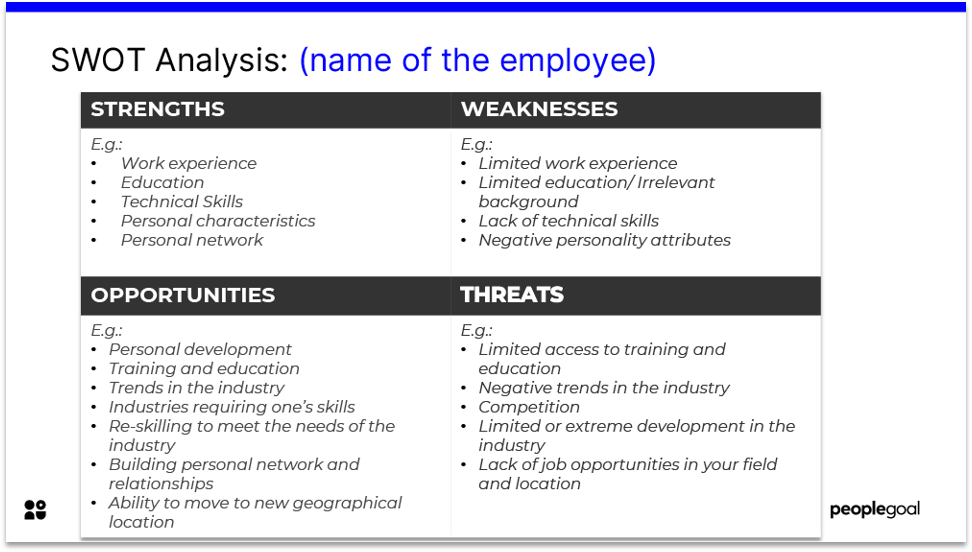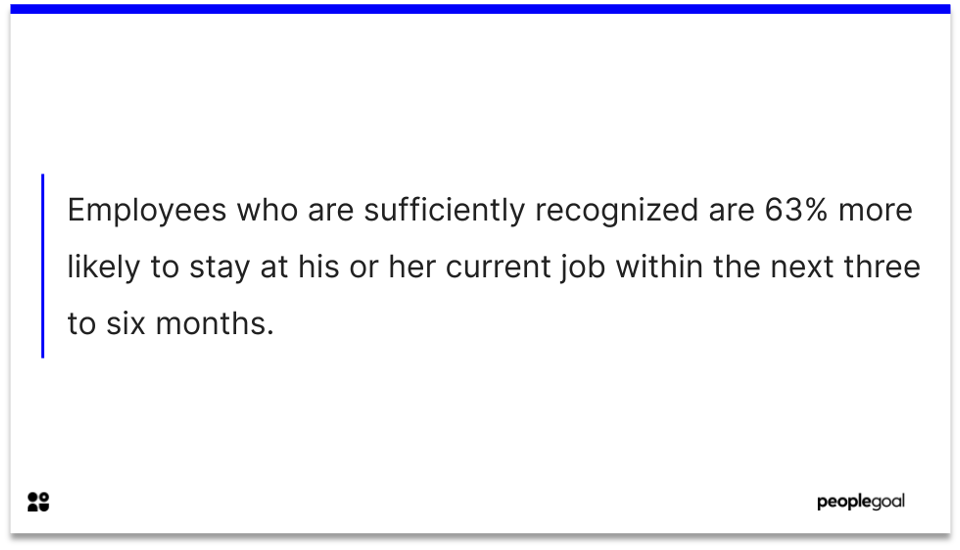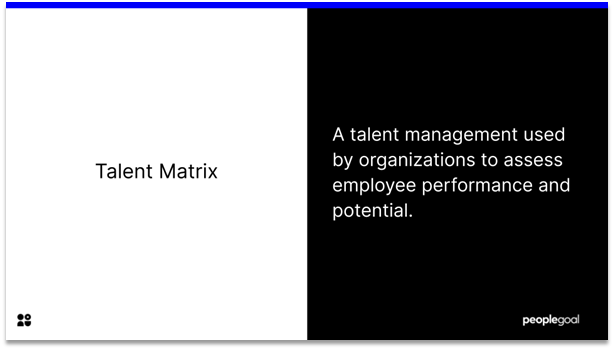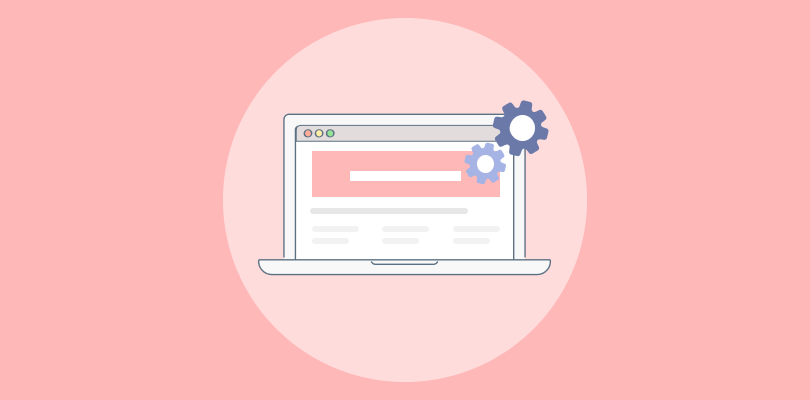What is an Employee Development Plan?
Employee development plan is a set of actions to help individuals improve their knowledge and skills, accomplish more in their jobs and help the business to achieve its organizational goals. Both managers (or leaders) and employees work collaboratively on the development plan to make it effective. The development plan is implemented and driven by managers who provide support and coaching to their employees. Employees put in place the actions and own the activities themselves.
Additionally, if effectively implemented, employee development plans are essential for organizations as they help to address future business needs and plan for future success.
It is also important to note that employee development plan and an individual development plan are not the same thing. While individual plans are purely a responsibility of an individual themselves, employee development plan materials are used equally by the employees and their managers to help them develop.
Why is Employee Development Plan Important?
Employers are increasingly realizing the importance of developing their employees not only to assure positive performance of their business but also to retain their best talent. Self-development is an outstanding source of motivation for most people. Therefore, it can improve levels of employee engagement in your organization and boost employee loyalty.
The loyal employees who put their heart and soul to their work also expect something in return. They need to feel appreciated and valued. They need to grow over time. They need to be (and feel) prepared for unforeseen situations and challenges. Therefore, you need to ensure their personal and professional development to help them thrive on their career path.
To start with, let’s conduct some self-coaching and reflection here. Think about yourself as a manager and your competencies;
- How much time do you devote to the development of your employees?
- Do you provide your employees with ongoing 360 feedback?
- Do you provide your employees with a clear sense of vision for the business you are leading?
- Do you openly communicate with your employees and build relationships that encourage collaboration and knowledge sharing?
And most importantly:
Do you provide your employees with coaching and development opportunities?
How to Develop an Employee Development Plan?
Do not worry. In case your organization lacks an employee development process, or the development plan needs a refresh you can take these easy and straight-forward steps to establish a development plan in your organization.
Firstly, bear in mind that the plan can address different aspects of growth-oriented, skills-oriented or relationship-oriented skills of your employees. There are various employee development techniques commonly used for employee development. These include formal education, assessment, job experiences and interpersonal relationships. Most companies choose to use a combination of these techniques.
Secondly, the development plan is not going to be effective unless it is integrated into the day-to-day work lives of your staff.
The process of developing an effective employee development plan has been addressed by many organizations and individuals including Stephen Goldberg and James Robbins . While Goldberg looks at it from wide perspective of organizational process, Robbins provides more coach-like approach from perspective of every individual employee. In this article we combined the two to enable you to create a plan with best interest of each of your employees as well as the business itself in mind.
Steps to Creating an Effective Development Plan
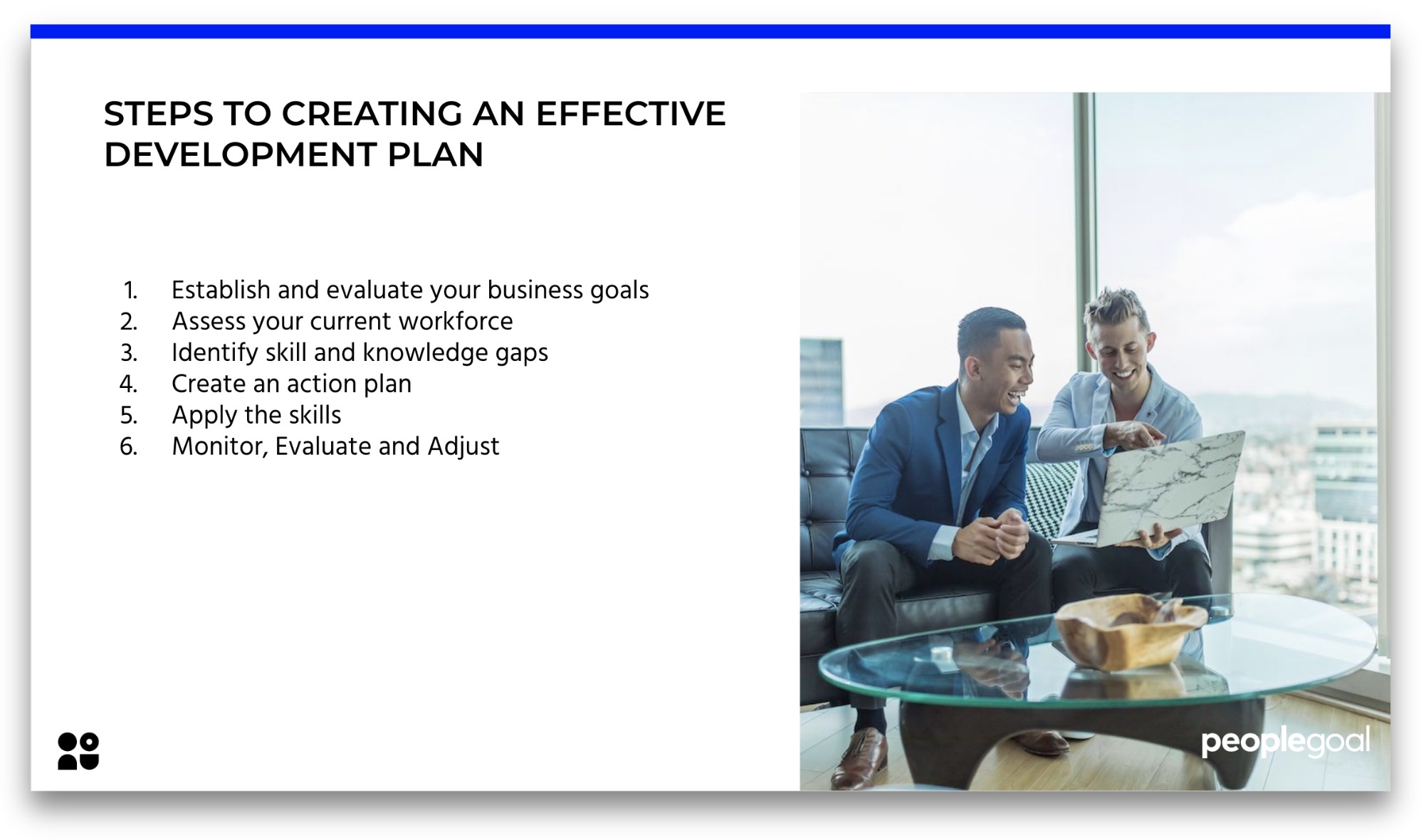
1. Establish and evaluate your business goals
If you have not done so yet, establish your short and long term organizational goals and share them with your staff. It is imperative to keep everyone on the same page to maintain the motivation levels in your company. It will also enable you to set direction for your business, its overall strategy and simplify the decision-making process in the long run.
2. Assess your current workforce
What skills, knowledge and abilities do you currently have in your workplace?
Focus on the strengths and weaknesses of each of your employees. Identify up to 6 competencies to excel at for each of your employees based on their position as well as their character traits. Once that is done, type yes-no ranking question for each of the competencies. Get the employee to review the questions and conduct their self-assessment. You can create your self-assessment matrix yourself or utilizes techniques such as a development wheel to create a visual representation of the self-assessment
3. Identify skill and knowledge gaps
Once you have assessed the strengths and weaknesses of each of your team members, you can address the challenges they; with your help, need to overcome.
To start with, encourage conversations with each of your employees to go through their self-assessment. Have a conversation asking questioning why they ranked themselves as they had in their self-assessment. This will enable you to evaluate whether your employees under-assessed or over-assessed themselves and provide them with the right coaching approach to help them improve. You can also rate them yourself (or by their manager) and compare the assessments to develop a more complex analysis of their competencies.
4. Create an action plan
Meet and review the challenges with each person individually. Your responsibility as a manager and a leader is also to provide advice and coaching to your employees and help them develop. Yet, you need to transfer ownership of employee growth to your employees themselves, while providing them the coaching and support they need. As Robbins states; “we need the employees to be self-learners, but we have to be the catalyst and get the ball rolling.” Have an open discussion with your employees and let them suggest solutions and activities that will help them better their competencies.
5. Apply the skills
An important part to creating an effective development plan is to allow your workforce to implement their newly acquired knowledge to their daily activities and tasks. Blended learning style has proven to be the most effective method to develop and improve skills.
6. Monitor, Evaluate and Adjust
To create a truly effective development plan, you have to monitor and measure progress of your staff and support the ones that are struggling. You should be also ready to be flexible with the plans and optimize them for individual needs of your employees.
Embedded content: https://www.youtube.com/watch?v=ejIyoRit6z8&t=1s
Conclusion
Creating and implementing development plans that meet the needs of your employees can be difficult and time-consuming but it is going to be worth the time and effort you invest in it. Your employees will reward you back by higher productivity, motivation and improved loyalty.
Ready to 3x Your Teams' Performance?
Use the best performance management software to align goals, track progress, and boost employee engagement.

